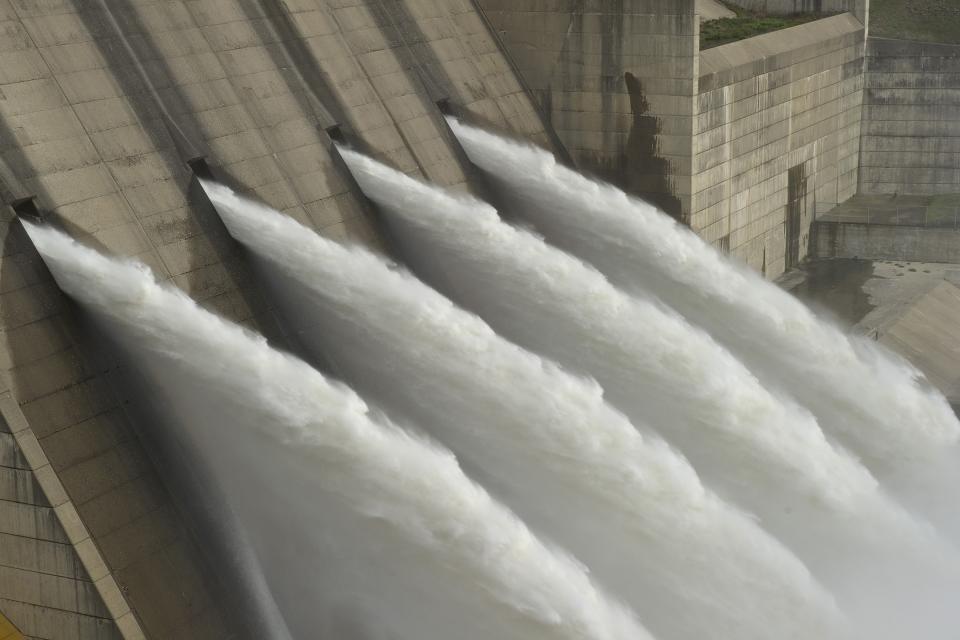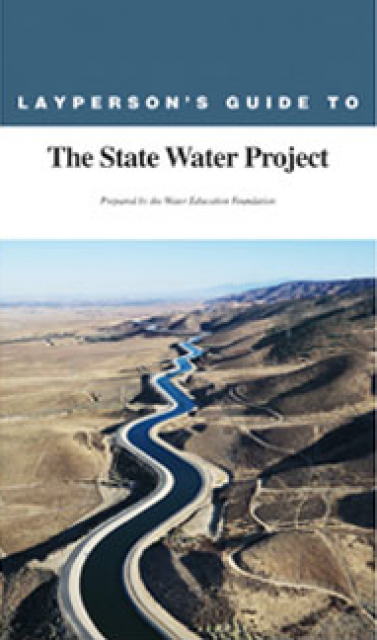Oroville Dam
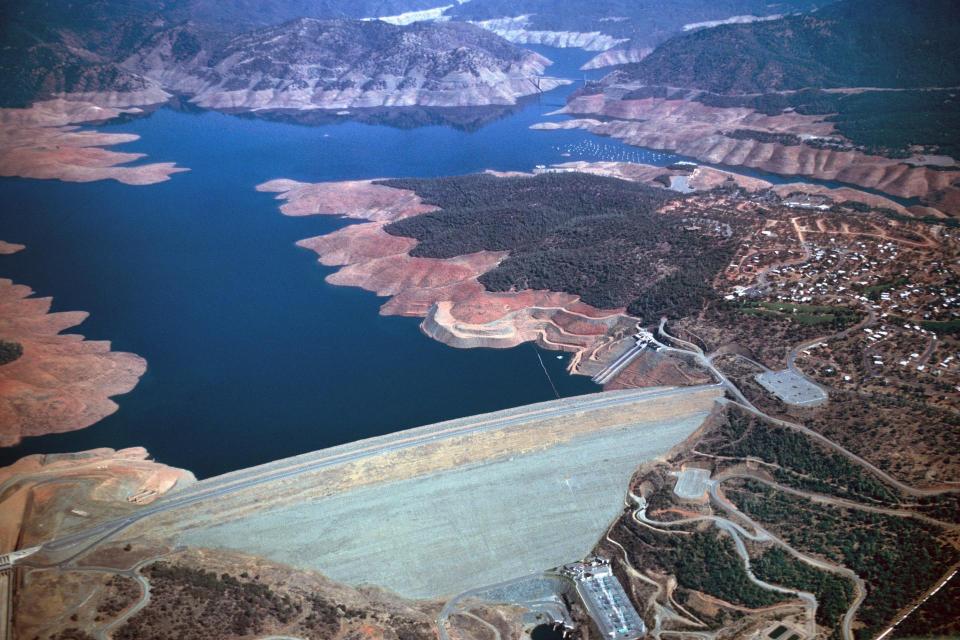 Oroville Dam is the tallest in the
United States and impounds the largest reservoir in
California’s State Water
Project, which brings water to 27 million residents and
750,000 acres of farmland.
Oroville Dam is the tallest in the
United States and impounds the largest reservoir in
California’s State Water
Project, which brings water to 27 million residents and
750,000 acres of farmland.
Completed in 1968, the 770-foot earthfill embankment impounds the northern Sierra Nevada’s Feather River, creating a reservoir that can hold 3.5 million acre-feet of water.
The state Department of Water Resources operates the dam and its powerplant. California State Parks manages the reservoir, Lake Oroville, as a recreation area. The lake is 10 miles long and draws many visitors for boating, fishing and camping.
Flood Control
The dam protects northern Sacramento Valley residents from the flood-prone Feather River. In December 1964, during its third year of construction, the partially completed dam 70 miles north of Sacramento checked major flooding on the Feather, sparing Valley residents.
When high inflows occur between October and May, water is held in Lake Oroville temporarily until downstream channels are capable of handling them without flooding. The dam, which provides 750,000 acre-feet of flood control storage, has been credited with minimizing damage during floods that have hit the Feather River watershed in virtually every decade since the dam was built.
Hydropower
The dam’s Edward Hyatt Powerplant is the largest hydroelectric facility in the State Water Project system, with the capacity to generate 819 megawatts. A megawatt produces roughly the amount of electricity consumed by 400 to 900 homes in a year.
Water Supply
Lake Oroville helps California withstand droughts. But in October 2021 a severe two-year drought had cut water storage to just 22 percent of capacity, breaking an all-time record-low set in September 1977.
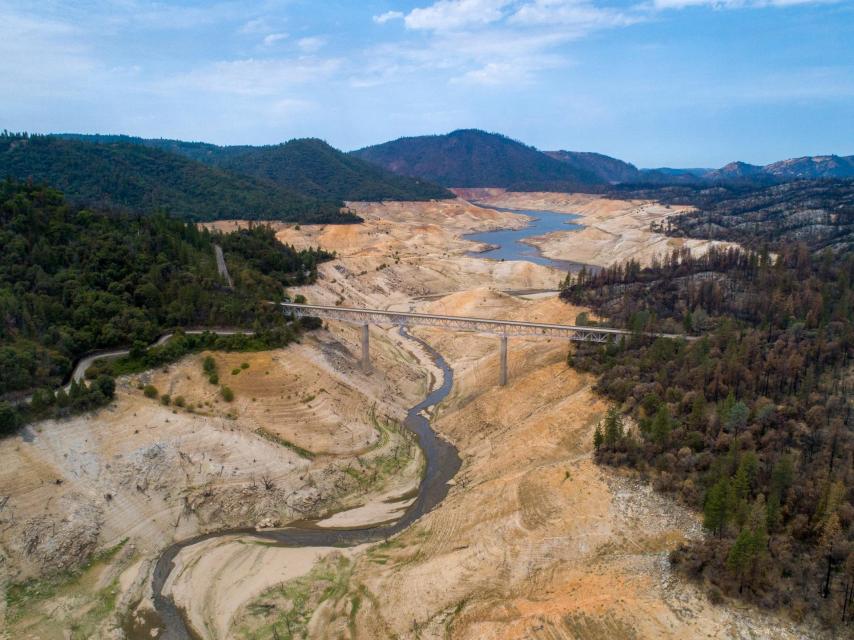 Water released from the dam flows
down the Feather River and enters the Sacramento River system
near the Alameda County town of Verona.
Water released from the dam flows
down the Feather River and enters the Sacramento River system
near the Alameda County town of Verona.
About one-third of the water released from the reservoir goes to uses between Oroville and the Sacramento-San Joaquin Delta. When it reaches the Delta, the Feather River water blends with snowmelt and runoff from other watersheds of the Sacramento and San Joaquin valleys.
At Barker Slough, in the North Delta, up to 76,781 acre-feet of water can be diverted into the North Bay Aqueduct, a 27.6-mile underground pipeline that delivers water to Napa and Solano counties.
Environmental Mitigation
Oroville Dam blocks salmon and steelhead trout from reaching upstream spawning areas, though many of the fish have adapted to spawning in gravel beds below the dam. The state built a fish barrier and ladder system that funnels adult salmon and steelhead into the Feather River Fish Hatchery, where they are artificially spawned and later released in the Delta or Sacramento River.
Fish raised at the hatchery or spawned in the Feather River account for an estimated 20 percent of the ocean sport and commercial catch of salmon and steelhead in the Pacific Ocean. The hatchery is run by the state’s Department of Fish and Wildlife.
2017 Crisis
On Feb. 7, 2017, a major atmospheric river storm settled over the Feather River basin, leading to one of the most serious dam safety incidents in national history.
Substantial runoff filled Lake Oroville, forcing a huge release of water down the dam’s gated spillway.
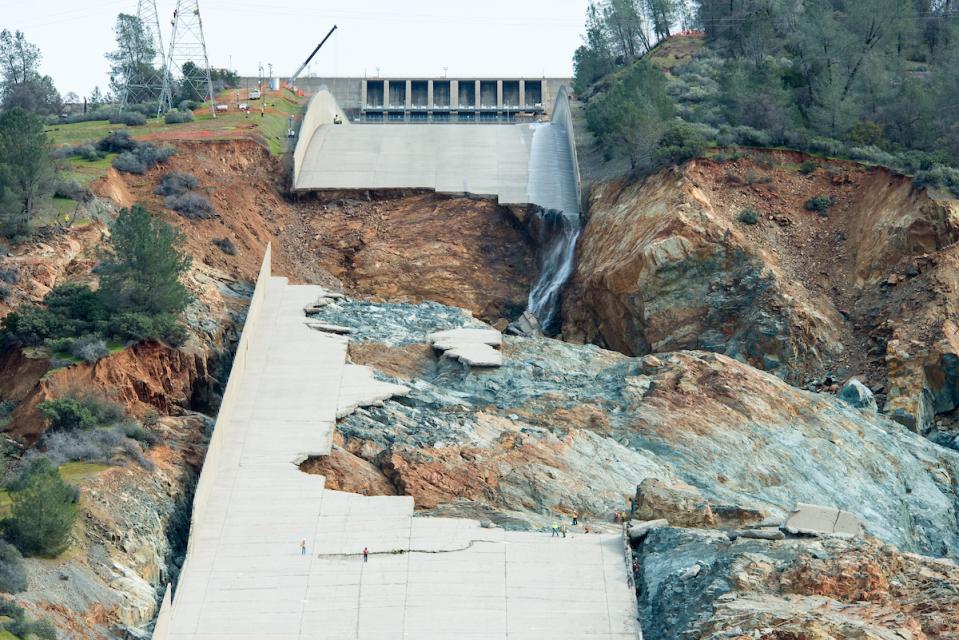 The powerful gush gouged a large
crater in the 3,000-foot-long concrete chute. Further erosion
threatened the operation of the power plant that is needed to
manage reservoir releases, including those to meet downstream
water demands and protect the Delta’s water quality.
The powerful gush gouged a large
crater in the 3,000-foot-long concrete chute. Further erosion
threatened the operation of the power plant that is needed to
manage reservoir releases, including those to meet downstream
water demands and protect the Delta’s water quality.
By Feb. 11, the rising reservoir overtopped the dam’s emergency spillway for the first time in its history and the overflow gushed down the barren hillside to the river below. The resulting erosion threatened to undermine the weir at the crest of the spillway; its collapse would result in uncontrolled releases from the reservoir and downstream flooding.
An evacuation order forced an estimated 188,000 people in the Oroville area to seek higher ground.
An independent analysis concluded that poor design and construction and inadequate state oversight contributed to the collapse of the main gated spillway. On April 2, 2019, water flowed for the first time down the rebuilt spillway.
A concrete buttress and other improvements to the emergency spillway were built to prevent erosion if it is ever used again. The Department of Water Resources estimated the cost of the repairs and recovery at $1.1 billion.






